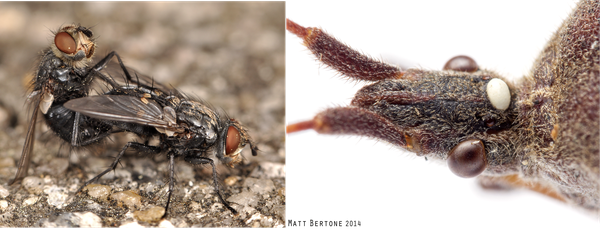The Best Strategy To Use For Eco Bed Bug Exterminators Dc
Wiki Article
Things about Eco Bed Bug Exterminators Dc
Table of ContentsThe Eco Bed Bug Exterminators Dc Statements4 Easy Facts About Eco Bed Bug Exterminators Dc ShownThe Best Strategy To Use For Eco Bed Bug Exterminators DcThe Single Strategy To Use For Eco Bed Bug Exterminators DcWhat Does Eco Bed Bug Exterminators Dc Do?
Because chemicals are toxic, they are likewise potentially dangerous to people, pets, various other organisms, and the environment. Consequently, people who utilize pesticides or regularly come in call with them should understand the relative toxicity, potential health and wellness effects, and preventative steps to decrease exposure to the products they utilize. Danger, or risk, of making use of chemicals is the potential for injury, or the level of risk associated with making use of a pesticide under a given collection of conditions.
Applicators can decrease or virtually eliminate exposure-- and therefore minimize threat-- by following the tag directions, utilizing individual safety garments and equipment (PPE), and handling the pesticide correctly. More than 95 percent of all chemical exposures come from dermal exposure, largely to the hands and forearms. By putting on a pair of unlined, chemical-resistant handwear covers, this sort of direct exposure can be nearly removed.
The unsafe effects that happen from a solitary exposure by any kind of path of entrance are labelled "acute effects." The 4 routes of direct exposure are dermal (skin), inhalation (lungs), dental (mouth), and the eyes. Severe toxicity is figured out by analyzing the facial toxicity, inhalation poisoning, and dental poisoning of test pets.
3 Simple Techniques For Eco Bed Bug Exterminators Dc
Intense toxicity is determined as the quantity or concentration of a toxicant-- the a.i.-- needed to kill 50 percent of the pets in an examination populace. This procedure is typically revealed as the LD50 (lethal dose 50) or the LC50 (deadly focus 50). Furthermore, the LD50 and LC50 values are based upon a solitary dosage and are taped in milligrams of chemical per kilogram of body weight (mg/kg) of the guinea pig or in parts per million (ppm).The reduced the LD50 or LC50 worth of a chemical product, the higher its poisoning to humans and animals. Pesticides with a high LD50 are the least toxic to people if utilized according to the directions on the product label. The chronic poisoning of a chemical is figured out by subjecting guinea pig to long-lasting direct exposure to the energetic ingredient.
The persistent toxicity of a chemical is more tough than severe toxicity to establish with laboratory analysis. Products are categorized on the basis of their loved one severe poisoning (their LD50 or LC50 worths). Chemicals that are identified as very poisonous (Toxicity Category I) on the basis of either dental, dermal, or breathing toxicity must have the signal words threat and toxin printed in red with a skull and crossbones icon plainly showed on the front panel of the plan label.
The severe (single dose) dental LD50 for chemical items in this group varies from a trace total up to 50 mg/kg. As an example, exposure of a few declines of a product taken by mouth can be fatal to a 150-pound individual. Some chemical items have just the signal word risk, which tells you nothing concerning the acute poisoning, simply that the item can trigger severe eye damage or serious skin inflammation
Eco Bed Bug Exterminators Dc - An Overview
In this category, the intense dental LD50 varieties from 50 to 500 mg/kg. A tsp to an ounce of this material can be fatal to a 150-pound person (how to get rid of bed bugs). Chemical items categorized as either slightly hazardous or reasonably harmless (Toxicity Categories III and IV) are called why not check here for to have the signal word CAUTION on the chemical tag
All pesticide poisoning worths, consisting of the LD50, can be located on the item's Product Safety Data Sheet (MSDS) - bed bug spray. Pesticide tags and MSDS can be acquired from merchants or manufactures. Additionally, many products additionally have info that can be discovered on the net. The signs and symptoms of chemical poisoning can vary from a light skin irritation to coma and even death.
Due to the fact that of possible health concerns, chemical customers and handlers should recognize the usual indications and signs of pesticide poisoning. The effects, or symptoms, of chemical poisoning can be generally defined as either topical or systemic.
The Basic Principles Of Eco Bed Bug Exterminators Dc
Dermatitis, or swelling of the skin, is approved as the most frequently reported topical effect linked with pesticide exposure. Some people have a tendency to cough, hiss, or sneeze when subjected to chemical sprays.
This signs and symptom normally subsides within a couple of mins after an individual is gotten rid of from the exposure to the toxic irritant. However, a response to a pesticide item that triggers a person not just to sneeze and cough however likewise to develop severe intense breathing signs and symptoms is extra most likely to be a real hypersensitivity or allergy.
Systemic results are fairly different from topical impacts. They often take place away from the initial factor of call as an outcome of the pesticide being taken in right into and dispersed throughout the body. Systemic results typically include nausea or vomiting, vomiting, exhaustion, migraine, and digestive tract conditions. In advanced poisoning cases, the individual might experience modifications in heart rate, problem breathing, convulsions, and coma, which might lead to death.
Report this wiki page